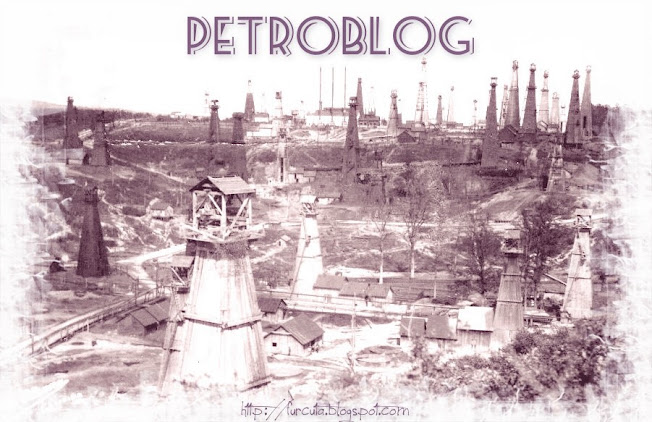How Romanian Oil Wells Were Destroyed
Oil wells on fire
 Evening Post, Volume LXXXIII, Issue 119, 20 May 1912, Page 7
Evening Post, Volume LXXXIII, Issue 119, 20 May 1912, Page 7 
Moreni(Romania)oilfields in 1911
 The production steadily increased from thirty tons to 100 tons a day. The oil was rich in benzine, and had a specific gravity of only 8.15. It commanded a ready sale, and within a fortnight of commencing operations 600 tons had been sold at a satisfactory figure and delivertd to the purchasers. On Oct 16 there was strong eruptions, the output of oil reaching 200 tons. On the 17th inst, when the wall was flowing at the rate of 1,000 .tons a day it took fire, and the flames were not extinguished until the night of the 19th. Twentyfour hours later they broke out afresh but the fire was soon got under, and according to a letter receivsd that morning from Mr. Alfred Rutherford, one of their directors, on the spot, "No. 4 well is still flowing merrily; Moreni has never before seen anything like this well, and they all think that she is a fortune in herself.The directors believed in seeing things themselves, and had, he thought, established a record by hold ing a, full board meeting on the field of operations 1,800 miles from London, between, the date of the,prospectus and that of the statutory meet ing. The directors had come back from their latest visit more than ever impressed with the future of roumanian oil, with the value of the companies properties at Moreni and Filipesti de Padure, and with the capacity and integrity of those to whom the local administration of its affairs had been entrusted.
The production steadily increased from thirty tons to 100 tons a day. The oil was rich in benzine, and had a specific gravity of only 8.15. It commanded a ready sale, and within a fortnight of commencing operations 600 tons had been sold at a satisfactory figure and delivertd to the purchasers. On Oct 16 there was strong eruptions, the output of oil reaching 200 tons. On the 17th inst, when the wall was flowing at the rate of 1,000 .tons a day it took fire, and the flames were not extinguished until the night of the 19th. Twentyfour hours later they broke out afresh but the fire was soon got under, and according to a letter receivsd that morning from Mr. Alfred Rutherford, one of their directors, on the spot, "No. 4 well is still flowing merrily; Moreni has never before seen anything like this well, and they all think that she is a fortune in herself.The directors believed in seeing things themselves, and had, he thought, established a record by hold ing a, full board meeting on the field of operations 1,800 miles from London, between, the date of the,prospectus and that of the statutory meet ing. The directors had come back from their latest visit more than ever impressed with the future of roumanian oil, with the value of the companies properties at Moreni and Filipesti de Padure, and with the capacity and integrity of those to whom the local administration of its affairs had been entrusted.The largest oil fire in european history



Gushing Fire at Moreni in 1925
The next scheme tried was digging a tunnel up to the wall with the idea of dynamiting it.The project was stopped by irate romanians who demanded huge payments for permission to use their property as a right of way.The burning well is about a mile deep and has a pressure of about 50 atmospheres.The damage may amount to $1,500,000.The fire was visible for 45 miles” Retrieval of Time Magazine Aug 17 , 1925.
The Bucharest correspondent of the "Daily Express" states that experts have extinguished the Moreni oil well fire after 50 days work. The damage is estimated at £250,000. Many unsuccessful attempts were made, including drawing a huge bell over the mouth of the well by chains, which the heat melted. Finally a tunnel 100ft. long was excavated to and perforated the bore, causing the extinction of the flames.Retrival of The Brisbane Courier Friday 25 September 1925.







.JPG)


